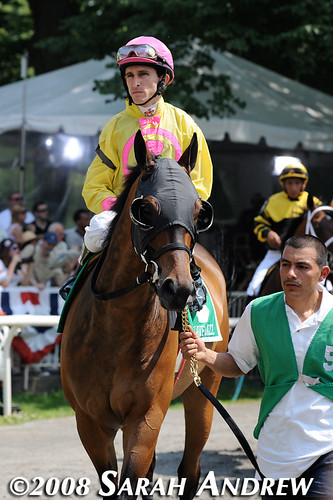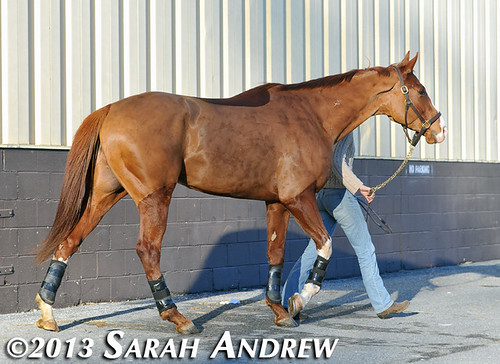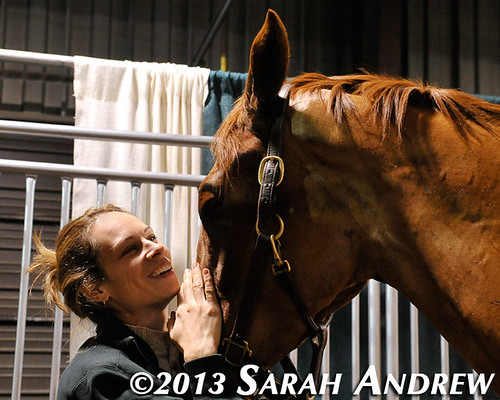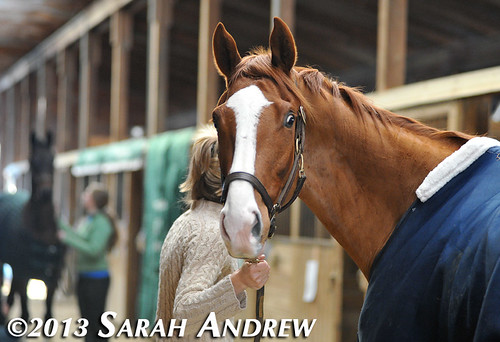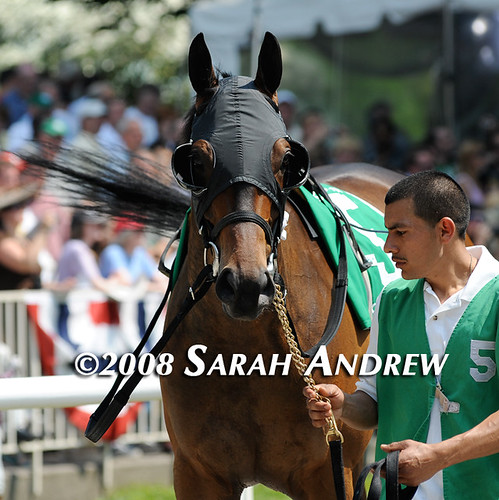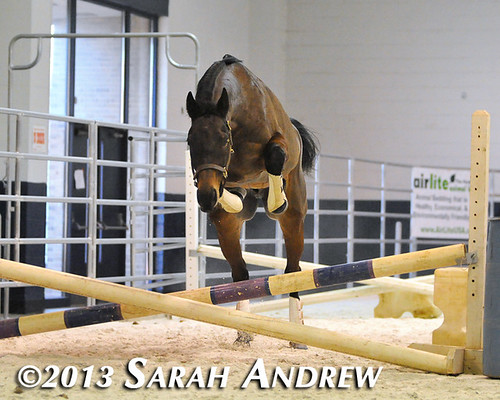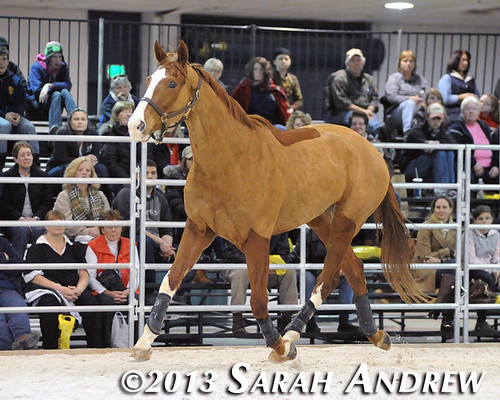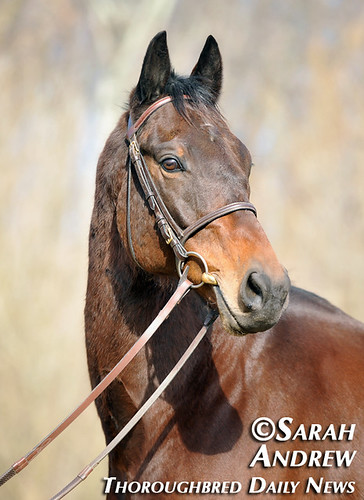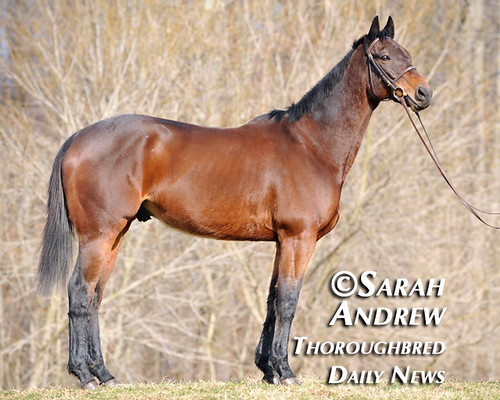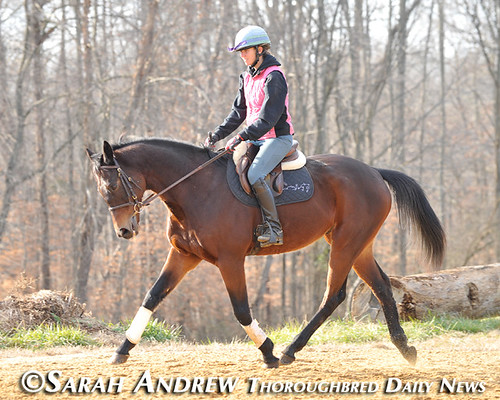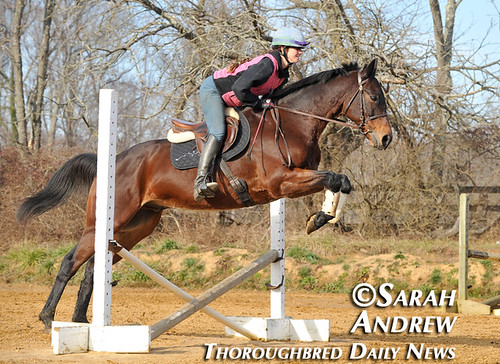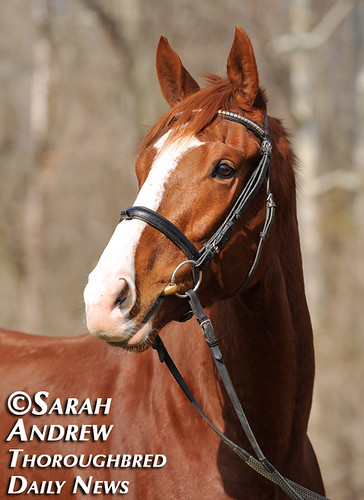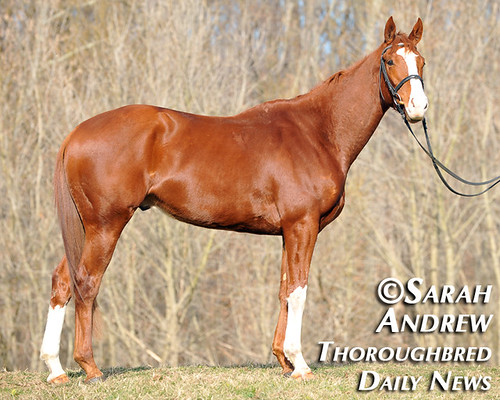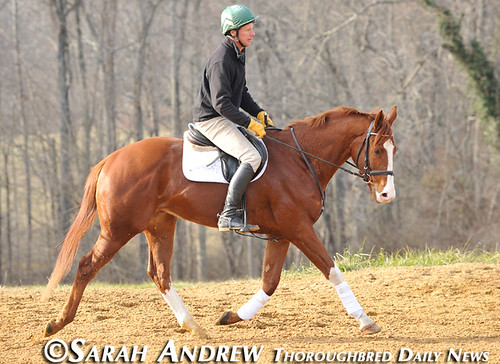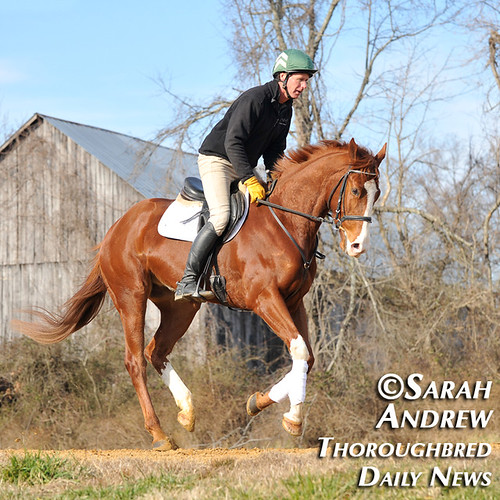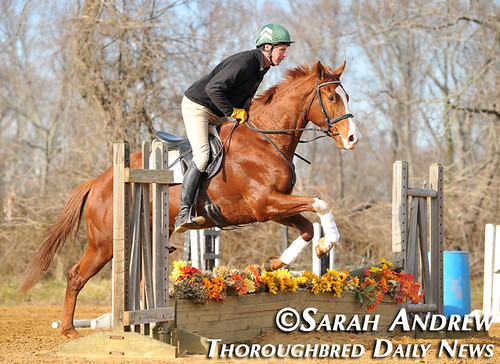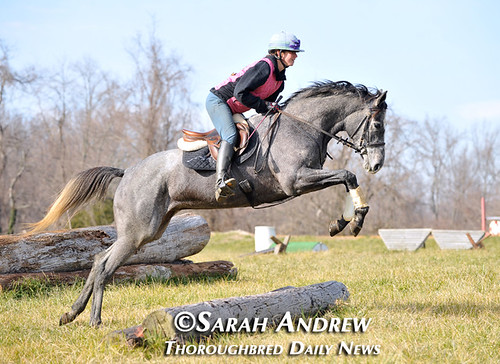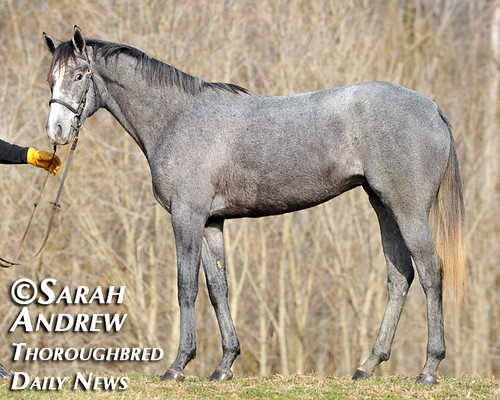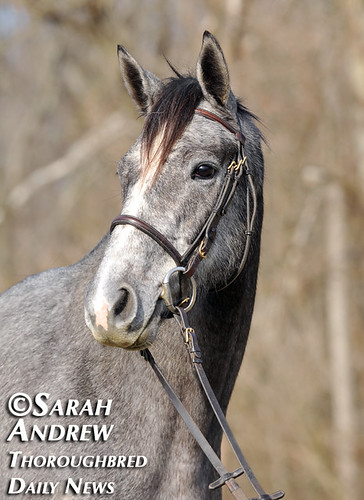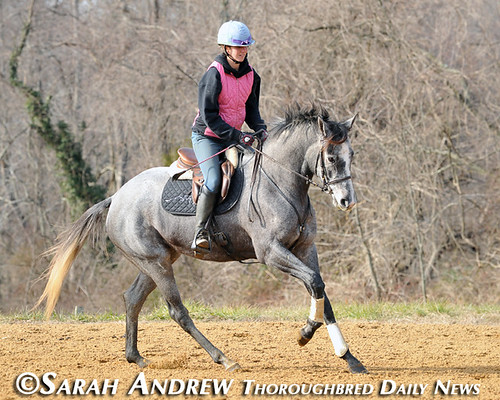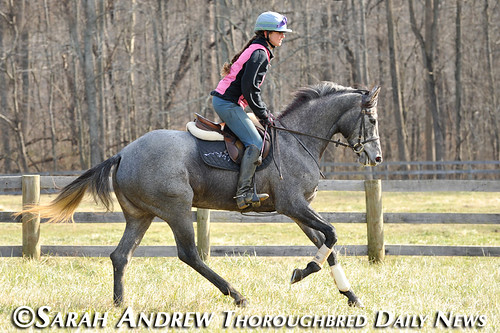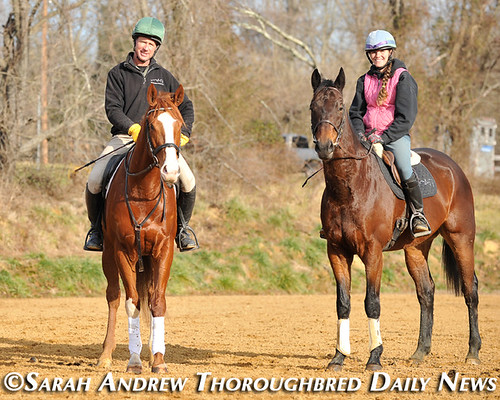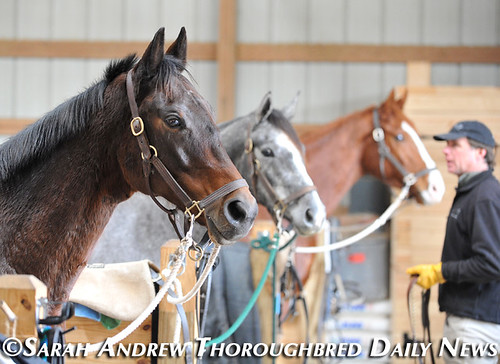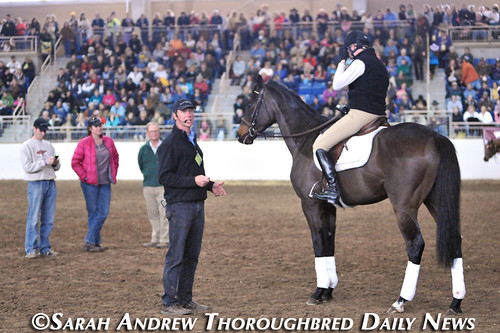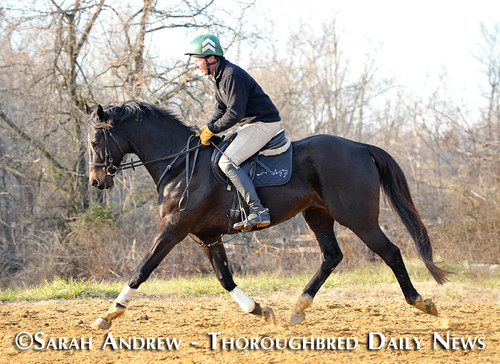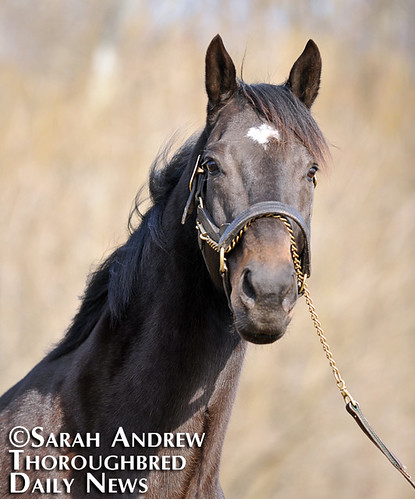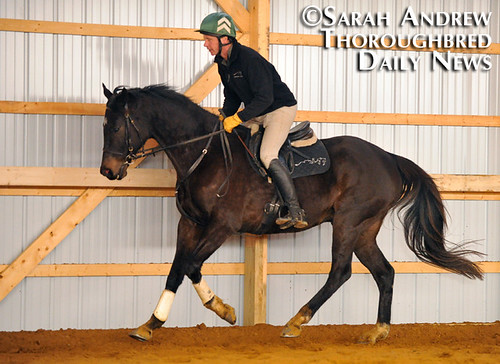Guest Blog
by Mark Cramer
In a recent TDN
article, race track aficionado Doug Thomson laments that more people are not
participating in the competition for most Thoroughbred race courses visited. And
now, with this report of a new record-holder, the previous leader Bill Finley,
with 86 race tracks visited, may be off on the road tomorrow morning to catch
up with Terry Bjork.
Bjork, from Chicago
via Montana, is also known as McChump, for his legendary website, The McChump Racing Tour. Terry also
publishes the lively Derby List on-line racing exchange.
I was not able to
locate Terry Bjork to simply ask him, “How many Tbred tracks have you visited?”
(He’s probably on the road somewhere watching $2,500 claimers in Arizona.) So I
had some archeological research to do. I combed through the McChump tours,
tallying Bjork’s colorful railbird accounts, as well as documenting from his
narratives whether or not certain far-off-the-beaten-path tracks on his index
had carded Tbred races.
I first met Terry
Bjork on a European racing tour, organized by one of the great lovers of
racing, the late Art Kaufman, also known as Lee Tominson for his Mudders and Turfers sire research. Terry
was there at Brighton when I faced the greatest challenge in my career. A
maiden race was named for our group. Track officials asked us to select the
best-groomed horse. A 50£ prize would go to the lad (groom) who had done the
best job. Art designated me to make the choice.
It was only a maiden
race, with an obscenely low purse, and yet to me, every one of those
magnificent racehorses looked like a Breeders’ champion! (I begged for help
from the tour companions and together we chose a winner and got our picture
taken with the dapper groom.)
A year later I had a
beer with Terry Bjork at the Claiming Crown at Canterbury. There I learned that
his McChump Racing Tour was also raising funds for a foundation which helped
find homes or new careers for neglected Thoroughbreds. That day, he made a designated
$5 bet: if the horse won, the winnings would go to the foundation. His choice wasn’t
the favorite, but it won anyway!
So I am honored and
humbled to be able to say that I’ve witnessed a small part of Terry Bjork’s amazing
race track saga. In order to come up with a final figure for Bjork’s race
course appearances, I had to deal with a few tracks for which the link to the
McChump play-by-play articles was not working. I researched those bull rings
(the asteroid belt of the racing galaxy) to make sure Thoroughbred events were
part of their advertised menu. I discovered, for example, that the Eastern
Oregon Livestock Show carded not only draft horse races, and not only chariot
races, but a Tbred race as well.
But what if the day
that Bjork had visited Eastern Oregon, there were no Thoroughbred races?
Because of the doubt, I simply did not add that particular track to Bjork’s
score. I also disqualified Anthony Downs in Kansas, because a 3-furlong race it
had featured for both Quarterhorses and Thoroughbreds was still primarily a
Quarterhorse race.
 |
| Bjork's trip to Anthony Downs in Kansas doesn't count, as the race he witnessed was primarily a Quarter Horse race. Hutch Post photo |
In the end, I tallied
a total of 91 visits to race tracks that carded legitimate Thoroughbred races.
Each McChump episode
gives us an on-the-road Kerouac tale of how he got to the track (usually by Chumpmobile,
often over a secondary route rather than the freeway), irreverent travel
insights, a critical view of grandstand architecture, the all-important
at-the-track price of a beer (the true measure of local currency), and here and
there a tip on betting horses. For example, at El Comandante in Puerto Rico,
Bjork learned “the rule of the encharcada”, coming from the word “charco”
(pool). “I simply bet the early speed horses to win in the slop,” he wrote,
referring to the bull-ring fair races.
With each race track
visit, something quirky is bound to happen. At one track, a blatant foul
occurred; the stewards failed file an inquiry and the jockey failed to object,
so the trainer stepped in and filed an objection … resulting in a disqualification.
Before risking a visit
to Saratoga, Bjork harbored Middle American suspicions about major New York
tracks but ended up giving Saratoga his highest two-thumbs-up award.
At most of the smaller
tracks, Bjork was impressed by the apron conviviality. “I could not help
feeling sorry for these good folk. Did they not know that the world had passed
them by? Did they not know that what they really should have been doing,
instead of being out enjoying a beautiful day with friends and neighbors, was
to have been staying home practicing their anti-social hermit skills while
calling in bets via phone to some out-of-state leech?”
Bjork’s mission seems
to defend the existential art of being at the track, in keeping with our
mission to find the one human being who has visited the most Thoroughbred race
tracks. Terry Bjork is now in the lead, with 91! The McChump Tour lasted for 17
years, ending in 2011. That averages more than five new tracks per year!
Tracks visited
El Comandante (Puerto Rico)
Brighton, Newmarket, Lingfield,
Kempton, Salisbury (England)
The Curragh (Ireland)
Longchamp (France)
Thistledown, Beulah
Park, River Downs (Ohio)
Hoosier Park (Indiana)
Great Lakes Downs,
Detroit, Mt. Pleasant Meadows (Michigan)
Arlington, Sportsman’s
Park, Hawthorne, Fairmount (Illinois)
Canterbury Park (Minnesota)
Prairie Meadows (Iowa)
Fonner Park,
Lincoln-Nebraska State Fair (Nebraska)
The Woodlands Race
Course, Eureka Downs (Kansas)
Keeneland, Turfway
Park, Churchill Downs, Ellis Park, Kentucky Downs (Kentucky)
Oaklawn Park (Arkansas)
Louisiana Downs, The
Fairgrounds, Evangeline Downs, Delta Downs (Louisiana)
Sam Houston, Lone Star
Park, Retama Park, Gillespie County Fairgrounds, Manor Downs (Texas)
Remington Park, Will
Rogers Downs, Blue Ribbon Downs, Fair Meadows-Tulsa Fairgrounds (Oklahoma)
Gulfstream, Hialeah (Florida)
Colonial Downs (Virginia)
Laurel, Pimlico (Maryland)
Charles Town,
Mountaineer (West Virginia)
Philadelphia, Penn
National (Pennsylvania)
Delaware (Delaware)
Monmouth, Garden
State, Atlantic City (New Jersey)
Finger Lakes, Belmont,
Saratoga (New York)
Rockingham (New Hampshire)
Del Mar, Hollywood
Park, Los Alamitos, Santa Anita, Bay Meadows, Golden Gate, Ferndale-Humboldt
County Fair (California)
Prescott Downs, Turf
Paradise, Rillito Park (Arizona)
Albuquerque, Sunland (New Mexico)
Arapahoe (Colorado)
Fort Erie, Woodbine (Ontario)
Northlands Park
(Edmonton), Marquis Downs (Saskatoon), Assiniboia Downs (Winnepeg) Whoop-up
Downs (Lethbridge), Stampede Park (Calgary) [Western Canada]
Hastings Park, Emerald
Downs (Washington)
Montana State
Fairgrounds, Eastern Montana Fairgrounds, Crow Fair, Yellowstone Downs,
Northwest Montana Fair (Montana)
Boise-Les Bois Park, Pocatello Downs (Idaho)
Brown County Fair (South Dakota)


